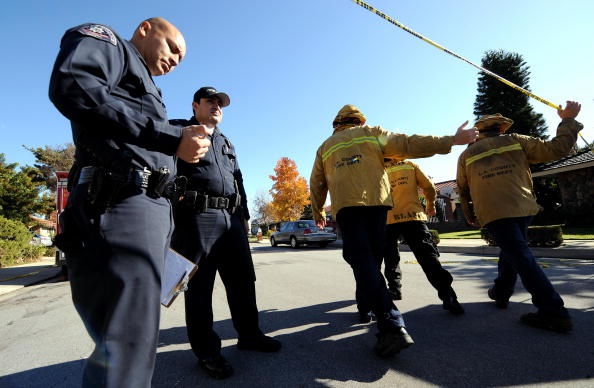Covering Spot News: Tips and Wisdom
In many towns and rural areas of the U.S., emergency-scene access is controlled by fire police, who work in tandem with other first responders. Reporters and editors of the York Daily Record in York, PA have assembled a tipsheet for reporters gathering news of accidents, fires, and larger-scale disasters where fire police come into play. Much of their advice applies as well to emergency scenes patrolled by regular police or fire brigades.

By the York Daily Record Sunday News Staff
Fire police take the load off paid police for traffic control, and they usually control access to a spot-news scene. Journalists arriving at a spot-news scene will often encounter fire police.
Understanding how to work with fire police at a scene can be the difference between being able to do your job and being kept far away from where news is happening. Scroll down for advice from the York Daily Record Sunday News Staff:
SHOW RESPECT
Avoid conflict or argument at all costs. You will lose every time.
Be polite. Don’t be afraid to use “sir” and “ma’am.” People don't get ugly if you respect them, and you won't close any doors if you need to talk with them later. Understand you are likely to deal with this person at future scenes. Use these encounters to build mutual respect.
Be humble. Thank the fire police for giving you access on your way into and out of a scene. If they're not close to the action and you have time, stop and tell them what you saw or heard -- sometimes, they're not aware of what's happening, and they appreciate getting the news, too.
Be willing to compromise. Many reporters fare well when they can engage in dialogue about what they’re trying to do, and compromise.
Try to see the situation from his/her point of view. The fire police’s job is to direct traffic, block the road so emergency personnel can work, and deal with media arriving to cover the news. Unlike a police officer or firefighter, fire police rarely get to the actual scene. Keep this in mind as you work to avoid or alleviate conflict about access to a scene.
Network with fire chiefs, deputy chiefs and lieutenants. They work closely with fire police, and if you build good relationships, that can help you at a scene.
IF FIRE POLICE HOLD YOU AT A CHECKPOINT
Try alternate entry points. You might find a way to get close to a scene by a route that is not blocked off. Or, if it is blocked off, the fire police at that location might have a different outlook about access than the first one you encountered.
Ask fire police to check in with the scene commander. If a fire police denies entry to a scene, calmly reiterate that you need to be able to see what is happening, and would the fire police check with the scene commander about access.
Try not to get lumped in with other media. Sometimes, media members will cluster in one place, and the fire police might decide that’s the “media spot” and restrict movement to that spot. You want to be as free as possible to move around without getting in the way of emergency personnel.
Ask if fire police can check with someone closer to the scene for information. Sometimes you can find out the basics of what is happening, which can help with interviews later. Sometimes you can find out how long it will be before you can get into the scene. Anything helps.
Consider avoiding the main route to a scene. Try to scope out alternate routes and entryways to the scene. Trying to go in through the “front door” off main roads often lands you at the most locked-down access point.
IF FIRE POLICE DIRECT OR RESTRICT YOUR MOVEMENT
Understand why. Be aware that safety (yours and others’) might be why you’re being asked to move. Try to determine whether they are following orders from an hour ago, or whether there is a development that makes you being there an issue. Always stay out of the way of responders working the scene.
Seek an alternate location. Use your instincts (and feet) to get to your next site. See if there’s a compromise -- a good vantage point that fire police are not concerned about.
Avoid the “media staging area.” Look at a map to see if there is a position that gives you better access. You might get better visual opportunities or neighbor interviews. Be aware that leaving a “media area” might mean you’ll miss official interviews from emergency responders, so check in with an editor before moving on.
If you’re not safe where you are, move. Don’t become part of the news you’re there to cover.
PRIVATE PROPERTY AND SPOT-NEWS SCENES
Understand your state’s trespassing laws. Reporting or shooting from private property can be a way to gather news even when fire police have kept you back from a scene. Getting permission from the property owner to do so avoids a potential trespassing violation.
Find nearby homeowners. Often, they won’t have a problem letting you onto their property. It’s not a great idea to wander without permission through the yards of people who are not involved in the news event.
Use critical thinking. If no owner is present and “No trespassing” signs are not posted, make the best decisions you can. If “No trespassing” signs are posted, you should generally observe those signs. There can be exceptions: For example, a scene at a local business might be on private property, but if onlookers or other media have gathered in a parking lot on the business’ property, you likely can join them in that moment. But if you’re later told to leave, leave.
































































































